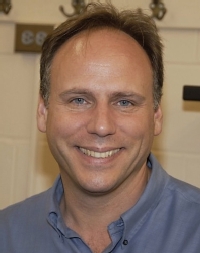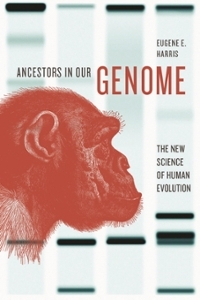Dr. Eugene Harris

Professor
Department of Biological Sciences and Geology
Office: Room 201 Medical Arts Building
Publication:
Ancestors in our Genome

Published 2015, Oxford University Press
Shortlisted among the top 5 science books of 2015 by Phi Beta Kappa (National Scholar Society. Learn More
Audio
Listen to an interview with Eugene Harris on the KGNU Science Show - How on Earth
http://howonearthradio.org/archives/4617
Video
Description
In 2001, scientists were finally able to determine the full human genome sequence, and with this discovery began a genomic voyage back in time. Since this time, we have sequenced the full genomes of a number of our primate relatives at a remarkable rate. The genomes of the common chimpanzee, and bonobo, orangutan, gorilla, and macaque monkey have already been identified, and other primate genomes are well underway. Researchers are beginning to unravel our full genomic history, comparing it with closely related species to answer important questions about how and when we evolved. For the first time, we are finding our ancestors in our genome and are thereby gleaning new information about our evolutionary past.
In Ancestors in Our Genome, molecular anthropologist Eugene E. Harris gives us a lucid and up-to-date account of the evolution of the human genome and our species. Written from the perspective of population genetics, and in simple terms, the book traces human origins back to their source among our early human ancestors, and explains many of the most intriguing questions that genome scientists are currently working to answer. For example, how closely are we related to our ape cousins? Was our separation from the apes fast or slow, and when and why did it occur? Where, when, and how did our modern species evolve? How do we search across genomes to find the genomic underpinnings of our large and complex brains and language abilities? How can we find the genomic bases for life at high altitudes, for lactose tolerance, resistance to disease, and for our different skin pigmentations? How and when did we interbreed with Neandertals and the recently discovered ancient Denisovans of Asia? Harris draws upon extensive experience researching primate evolution in order to deliver a lively and thorough history of human evolution. Ancestors in Our Genome is the most complete discussion of our current understanding of the human genome available.
Podcast of Ed Mert'z Nature Presentation 2014
Podcast Presentation by Phil Duckett on the Nature of Oakland Lake, New York City



